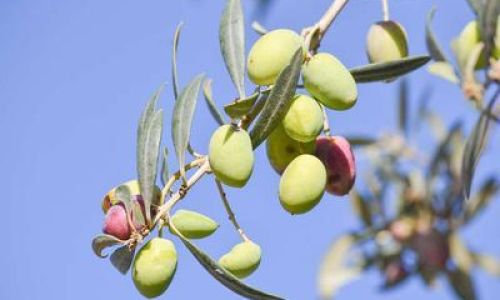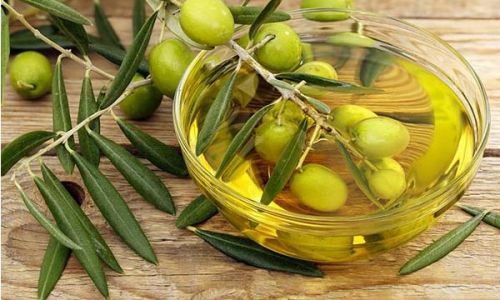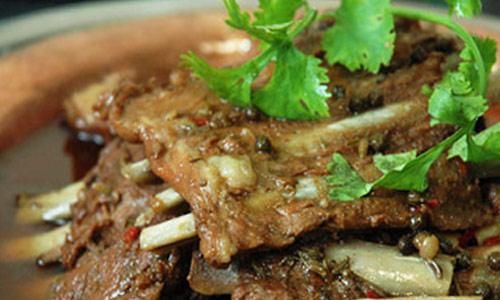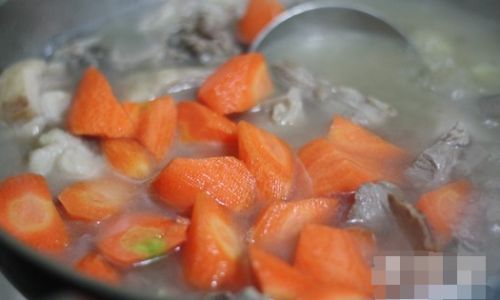Table of content
Introduction
In the vast realm of culinary exploration, there exists a lesser-known but intriguing vegetable that boasts a unique flavor profile and a myriad of health benefits—the Jerusalem artichoke, also known as sunchoke. This knobby, tuberous root vegetable, native to North America, might not be as familiar as potatoes or carrots, but it more than makes up for its obscurity with its versatility and nutritional richness. With a slightly nutty, sweet, and earthy taste, Jerusalem artichokes can be transformed into a variety of dishes that cater to diverse palates. This article aims to delve into the world of Jerusalem artichoke, offering insights on how to cook and enjoy this underappreciated vegetable to its fullest potential.
Understanding Jerusalem Artichoke
Before diving into the culinary delights of Jerusalem artichoke, it’s essential to understand what this vegetable entails. Jerusalem artichoke, scientifically known as Helianthus tuberosus, belongs to the sunflower family. Despite its name, which might mislead one to believe it originates from the Holy Land, it is native to eastern North America, where Native Americans have long utilized it as a food source.
The plant grows to about three to five feet tall, producing yellow flowers reminiscent of sunflowers. Beneath the soil, it develops tuberous roots that are harvested in the fall. These roots are what we know as Jerusalem artichokes. They come in various shapes and sizes, ranging from small, round nodules to larger, irregularly shaped tubers.
Nutritionally, Jerusalem artichokes are a powerhouse. They are rich in dietary fiber, vitamins C and B6, potassium, and manganese. They also contain inulin, a type of fiber that promotes gut health by feeding beneficial bacteria in the digestive system. This makes them an excellent choice for those seeking to improve their digestive health or manage blood sugar levels.
Selecting and Storing Jerusalem Artichoke
When shopping for Jerusalem artichoke, look for firm, smooth tubers with no signs of softening, mold, or decay. The skin can vary in color from light brown to dark brown, with some varieties having a slightly knobby appearance. Avoid tubers with cracks or cuts, as these can harbor bacteria and lead to spoilage.

Once you’ve brought your Jerusalem artichokes home, store them in a cool, dark place with good ventilation. Ideally, they should be kept at a temperature between 32°F and 45°F (0°C to 7°C). Properly stored, they can last for several weeks. If you plan to use them within a few days, you can store them in the refrigerator’s crisper drawer.
Preparing Jerusalem Artichoke: Tips and Tricks
Before cooking, Jerusalem artichokes require some preparation. Start by washing them thoroughly under running water to remove any dirt or debris clinging to the skin. Since the skin is edible and adds texture and nutrients to dishes, you don’t need to peel them unless they are very thick or you prefer a smoother texture.
If you decide to peel, use a sharp knife to avoid crushing the flesh, which can make the tubers more susceptible to browning. Once peeled or washed, cut the tubers into desired shapes—slices, cubes, or matchsticks—depending on your recipe.
To prevent discoloration, which can occur due to the presence of phenolic compounds, you can soak the cut pieces in water with a little lemon juice or vinegar. This will help maintain their vibrant color until you’re ready to cook.
Cooking Methods for Jerusalem Artichoke
Jerusalem artichoke’s mild, slightly sweet flavor makes it incredibly versatile in the kitchen. Here are several cooking methods to bring out its best qualities:
Boiling and Steaming
Boiling and steaming are straightforward methods that preserve the natural sweetness and texture of Jerusalem artichoke. To boil, simply place the prepared tubers in boiling salted water and cook until tender, usually around 10-15 minutes. For steaming, use a steamer basket set over simmering water and steam for about 15-20 minutes or until fork-tender.
Both methods result in tender, flavorful tubers that can be served as a side dish, tossed with butter, herbs, and a pinch of salt and pepper, or incorporated into soups and stews.
Roasting
Roasting brings out the nutty, caramelized flavors of Jerusalem artichoke, making it a perfect addition to any fall or winter meal. Preheat your oven to 400°F (200°C), toss the prepared tubers with olive oil, salt, pepper, and your favorite herbs (like rosemary or thyme), and spread them in a single layer on a baking sheet. Roast for about 20-25 minutes, stirring occasionally, until golden brown and crispy on the outside and tender on the inside.

Roasted Jerusalem artichokes can be enjoyed as a standalone side dish, added to salads, or incorporated into grain bowls and hashes.
Sautéing and Stir-Frying
Sautéing and stir-frying are quick cooking methods that retain the crispiness of Jerusalem artichoke while adding layers of flavor. Heat a bit of olive oil or butter in a skillet over medium-high heat. Add thinly sliced or diced tubers and cook, stirring occasionally, until they are golden brown and tender-crisp. You can enhance the flavor by adding minced garlic, shallots, or fresh herbs during the last few minutes of cooking.
Sautéed or stir-fried Jerusalem artichokes pair well with proteins like chicken, fish, or tofu, and can be served over rice, noodles, or quinoa.
Pureeing and Soups
Jerusalem artichoke’s creamy texture makes it an excellent base for soups and purees. Simply boil or steam the tubers until tender, then blend them with vegetable broth, cream (or a dairy-free alternative like coconut milk), and seasonings until smooth. You can add other vegetables, such as carrots, potatoes, or leeks, to create a more complex flavor profile.
Jerusalem artichoke soup is comforting, creamy, and naturally sweet, making it a perfect dish for colder weather. For a richer flavor, consider roasting the tubers before blending, or adding a splash of white wine or sherry to the soup pot.
Pickling and Fermenting
For those who enjoy preserved foods, pickling and fermenting are excellent ways to enjoy Jerusalem artichoke year-round. Pickling involves submerging the tubers in a vinegar-based brine, which preserves them and adds a tangy flavor. Fermenting, on the other hand, involves allowing natural bacteria to break down sugars in the tubers, creating a probiotic-rich, tangy product.
Both pickled and fermented Jerusalem artichokes can be used as condiments, added to salads, sandwiches, or grain bowls, or enjoyed on their own as a healthy snack.
Creative Recipe Ideas
Now that you’re familiar with the basic cooking methods for Jerusalem artichoke, let’s dive into some creative recipe ideas to inspire your culinary adventures:

Jerusalem Artichoke and Leek Gratin
Thinly slice Jerusalem artichokes and leeks, layer them in a baking dish with grated cheese, heavy cream, and seasonings, and bake until bubbly and golden. This elegant side dish combines the earthy flavors of the tubers with the mild sweetness of leeks and the richness of cheese.
Jerusalem Artichoke and Quinoa Salad
Combine roasted Jerusalem artichokes with cooked quinoa, cherry tomatoes, cucumber, red onion, and fresh parsley. Drizzle with a lemon-tahini dressing, and toss to combine. This vibrant salad is packed with nutrients and flavors, making it a perfect lunch or dinner option.
Jerusalem Artichoke and Mushroom Risotto
Use pureed Jerusalem artichoke as a creamy base for a traditional risotto, adding sautéed mushrooms, garlic, and white wine for depth of flavor. This dish is rich, comforting, and a delightful way to showcase the versatility of Jerusalem artichoke.
Jerusalem Artichoke Chips
Thinly slice raw Jerusalem artichokes, toss with olive oil, salt, and pepper, and bake until crispy. These healthy, homemade chips are a delicious, crunchy snack that’s perfect for movie nights or game days.
Jerusalem Artichoke and Apple Cider Vinegar Pickles
Pickle thinly sliced Jerusalem artichokes in a mixture of apple cider vinegar, sugar, water, and spices like mustard seeds and dill. These tangy, crunchy pickles are a refreshing addition to sandwiches, salads, and charcuterie boards.
Conclusion
Jerusalem artichoke, though not as well-known as some other root vegetables, offers a unique flavor and a range of culinary possibilities. From creamy soups and gratins to crispy chips and pickles, this versatile vegetable can be transformed into dishes that cater to various tastes and preferences. With its nutritional benefits and adaptability, it’s worth exploring the world of Jerusalem artichoke to discover its culinary delights. So, the next time you come across this intriguing tuber at your local farmer’s market or grocery store, don’t hesitate to give it a try. You might be surprised by how delicious and satisfying this lesser-known vegetable can be.






0 comments